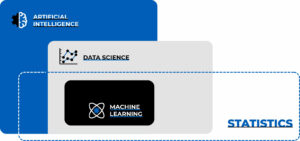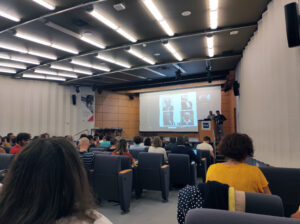Review of the 54th Statistics Days
5 October 2023
A not-to-be-missed event for the French-speaking statistics community, Journées de la Statistique (JdS) returned to the Solbosch Campus of the Université libre de Bruxelles for its 54th edition. Organised every year by the Société Française de Statistique (SFdS), these one-day conferences are an opportunity to meet experts and discover the latest advances in all areas of statistics, both theoretical and applied, and to exchange ideas with passionate researchers.
Our data scientists visited the site. Here’s a closer look at the latest advances in the sector.
Statistics, data science, AI… What are they?
Let’s go back to the basics. Statistics is a mathematical field that aims to analyse data and extract characteristics from it in order to study phenomena. Statistics is a cornerstone of Data Science and plays a vital role in Artificial Intelligence (AI).
And what about AI? Some of this technology, in particular Machine Learning (ML), is based on learning information from data to build and train predictive models..
Generally speaking, learning methods derived from statistics have the advantage of being interpretable and explainable. A crucial point in the activities of DiagRAMS Technologies.

Statistics to meet industrial challenges
 How can we overcome the limitations of traditional statistical methods when faced with complex problems or industrial data (heterogeneous data, correlation, large size, etc.)? How can we avoid the biases inherent in manual pre-processing? How to prioritise methods that can be explained and interpreted (trusted AI) and avoid the black box effect (use of more complex methods such as those based on Deep Learning).
How can we overcome the limitations of traditional statistical methods when faced with complex problems or industrial data (heterogeneous data, correlation, large size, etc.)? How can we avoid the biases inherent in manual pre-processing? How to prioritise methods that can be explained and interpreted (trusted AI) and avoid the black box effect (use of more complex methods such as those based on Deep Learning).
Some interesting methods shared at the JdS 2023:
- The integration of physical law constraints in the learning of regression models. A method that ensures a certain level of realism in model predictions, a fundamental point in our industrial applications.
- The concept of signatures to automatically obtain a simple representation of time series that can be used by Machine Learning methods.
- Data fission, an alternative to data splitting or kernel thinning, which is a more efficient method of data compression than traditional sub-sampling methods.
See you at the Jds 2024
To keep abreast of the latest trends in research applied to industry, the DiagRAMS data science team will be delighted to take part in the 55th Journées de la Statistique from 27 to 31 May 2024.


